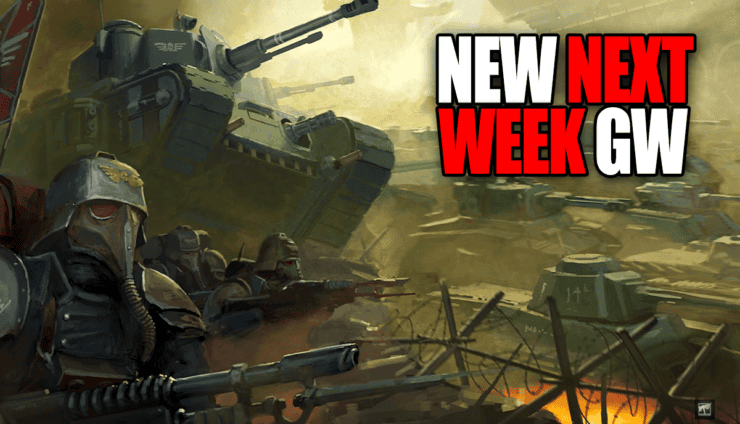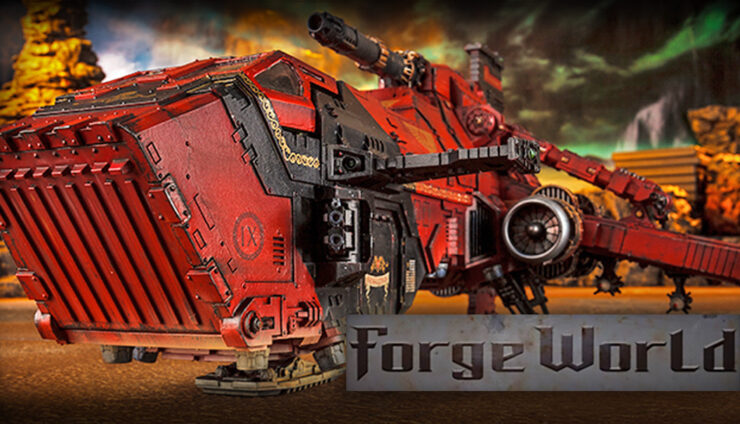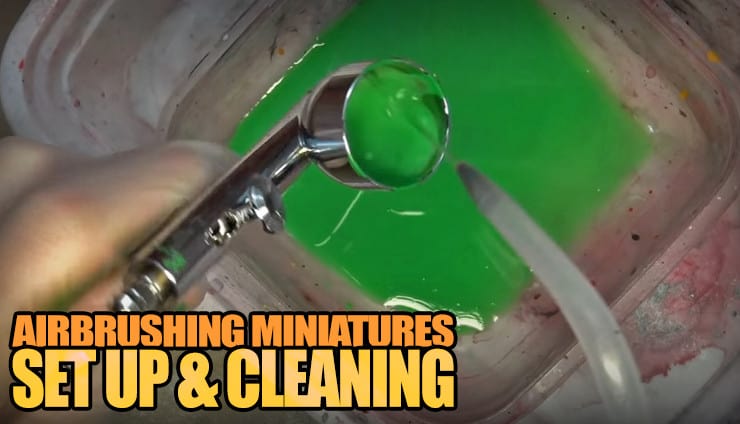 These tips and tricks from Rob’s OG tutorial will help you with how to set up and clean an airbrush for painting miniatures!
These tips and tricks from Rob’s OG tutorial will help you with how to set up and clean an airbrush for painting miniatures!
So, you just bought a shiny new airbrush, but now what? Well, there’s a lot that goes into airbrushing other than just the techniques for painting. You need to know how to keep it running, get it set up, and last you longer than a few uses!
This is geared towards beginners, but is full of tips you may have never heard of before! So if you’ve been struggling with the technical side of it, this is definitely worth checking out!
Rob is using the Iwata Eclipse, which is a pretty good airbrush and will last way past the “starting out phase”.
Be Careful of Harsh Chemicals
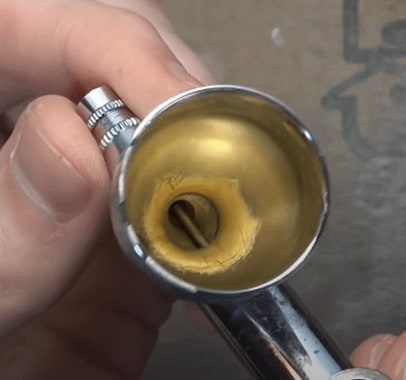
Parts & New Airbrush
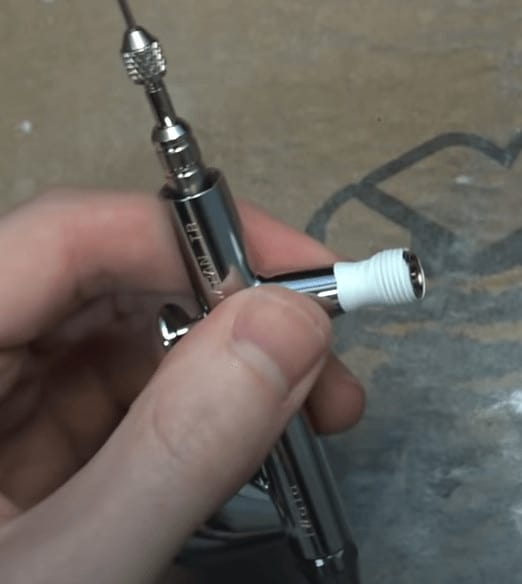
You can take the front nozzle off to check your parts on the inside and make sure everything is lubricated, but just be careful when putting your pieces back on. You don’t want to overturn them, so get it close with the wrench and then just hand tighten it to finish.
Lastly, you want to take some Teflon tape and wrap it around the bottom where the air hose comes in. This will give you an even more airtight seal.
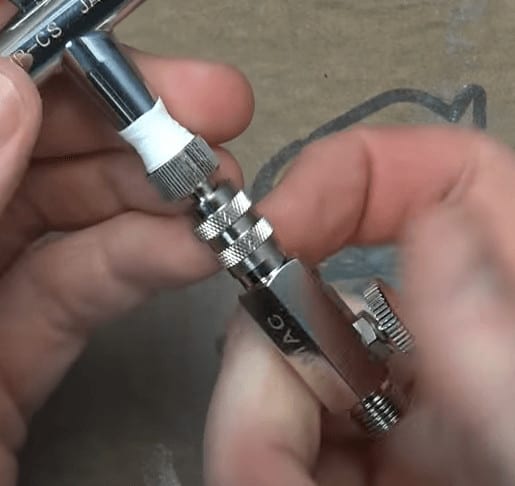
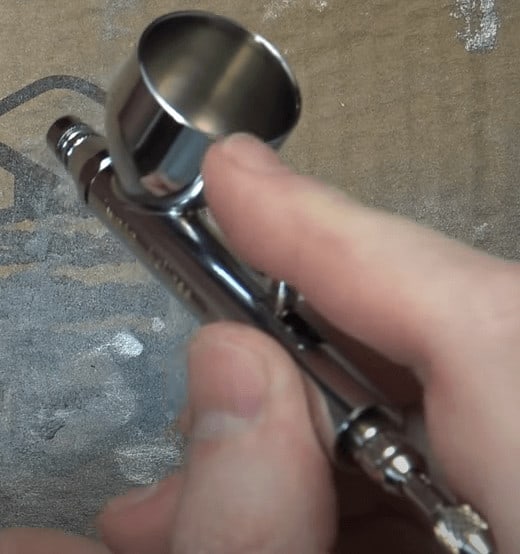
Then feel around for any leaks. This also gives you a good idea of how much paint you’ll be pushing through when you do put it in. So do some exercises first like writing your name in cursive and such before hopping right into a mini.
How to Clean an Airbrush for Painting Miniatures
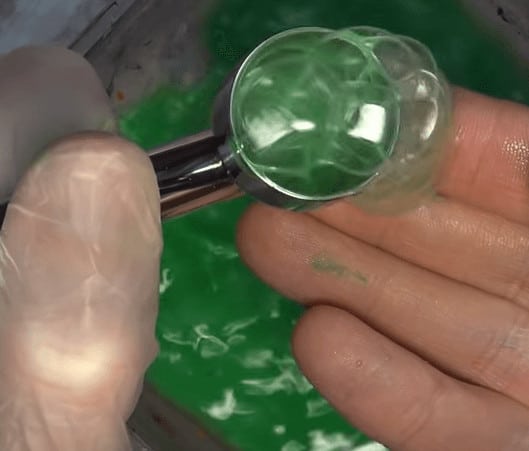
Put a little water in the reservoir and put your finger over the tip (without piercing your skin). Then just pull the trigger and this will push everything back through to the reservoir. Then rinse it out again, just repeat until the water is clear.
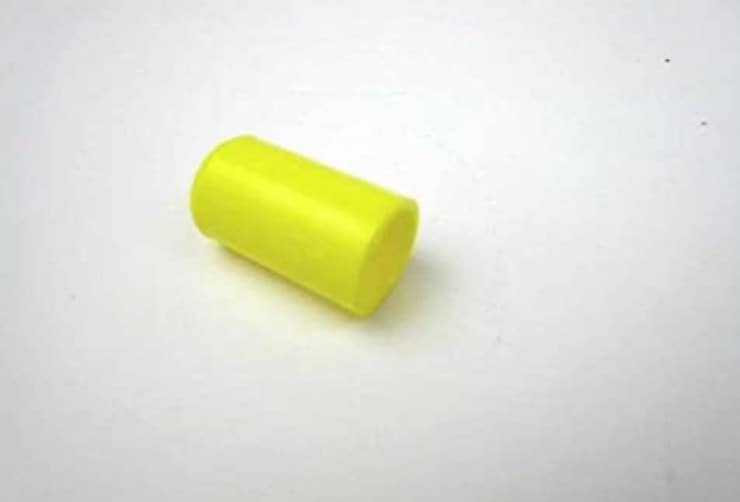
You can also pull the needle through the back and clean the paint off of that. Just be very careful any time you touch the needle! After a while, you probably want to re-rube the needle and work that substance into all the parts of the airbrush as you re-insert the needle. Rob loves Iwata’s own lube, but keep in mind that if you’re constantly re-lubing your airbrush, you are probably also cleaning it too much!
When it comes to your internal parts good news is that with the Iwata, if you ever damage your needle or even the nozzle, mostly all these replacement parts are available locally if you have a Hobby Lobby around.
If you get build-up on the tip or around the nozzle use a plastic bristle brush with some water to remove the paint gently.
Storage
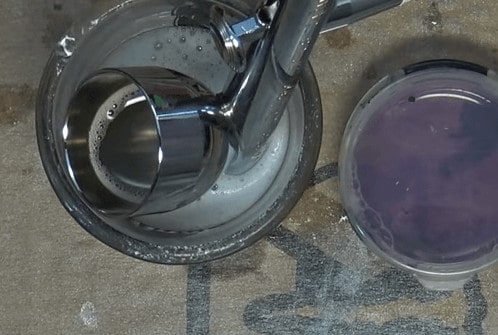
Have you tried to clean your airbrush yet after painting miniatures? Do you have a method that you swear by?
Let us know in the comments of our Facebook Hobby Group, and make sure you enter the latest monthly giveaway for FREE today!
Get ad-free access to the site, plus a ton of miniatures, and support some of the best creators out there for as little as $6 a month on Patreon!
This post contains affiliate links, as an Amazon Associate Spikey Bits earns from qualifying purchases.




